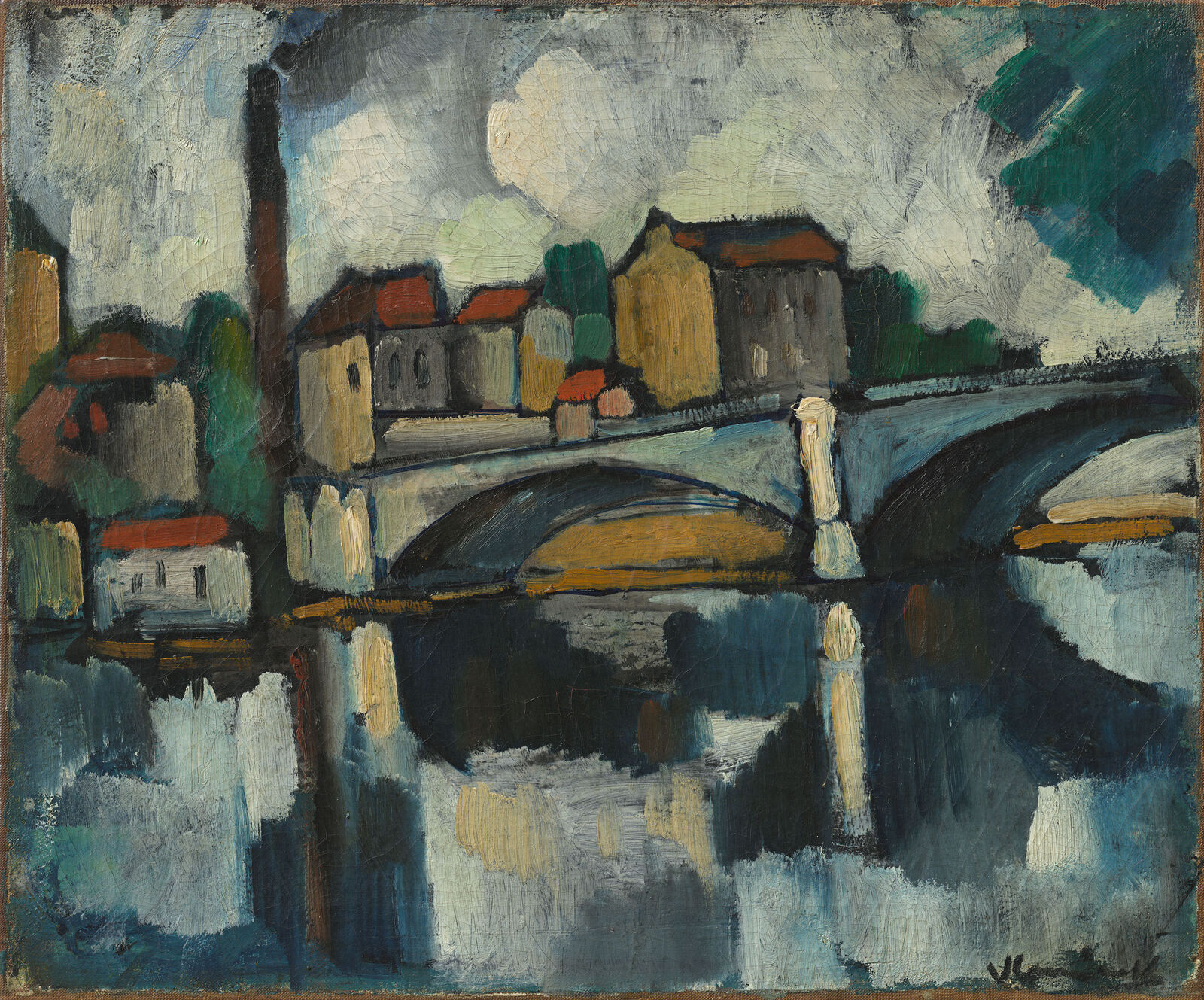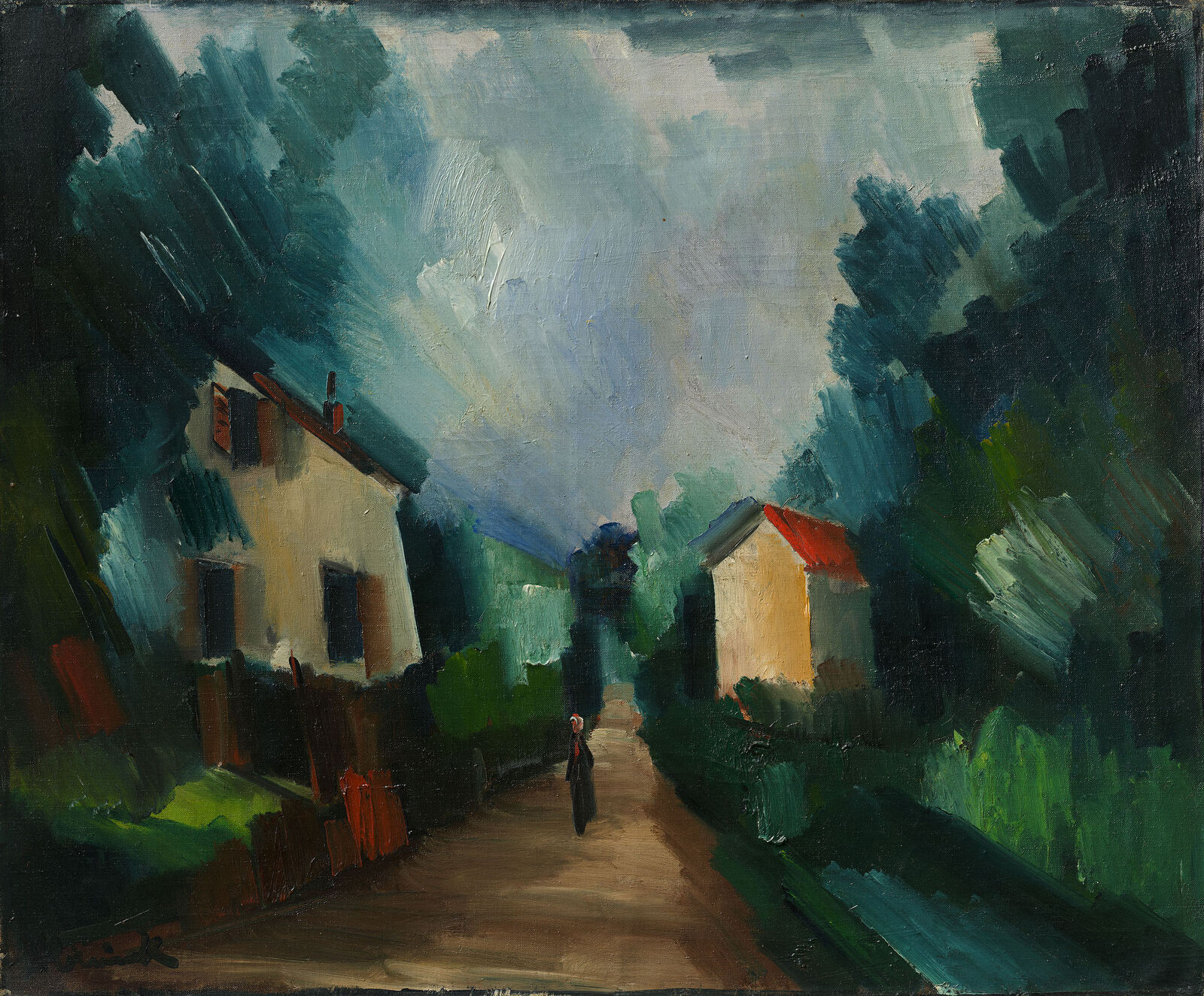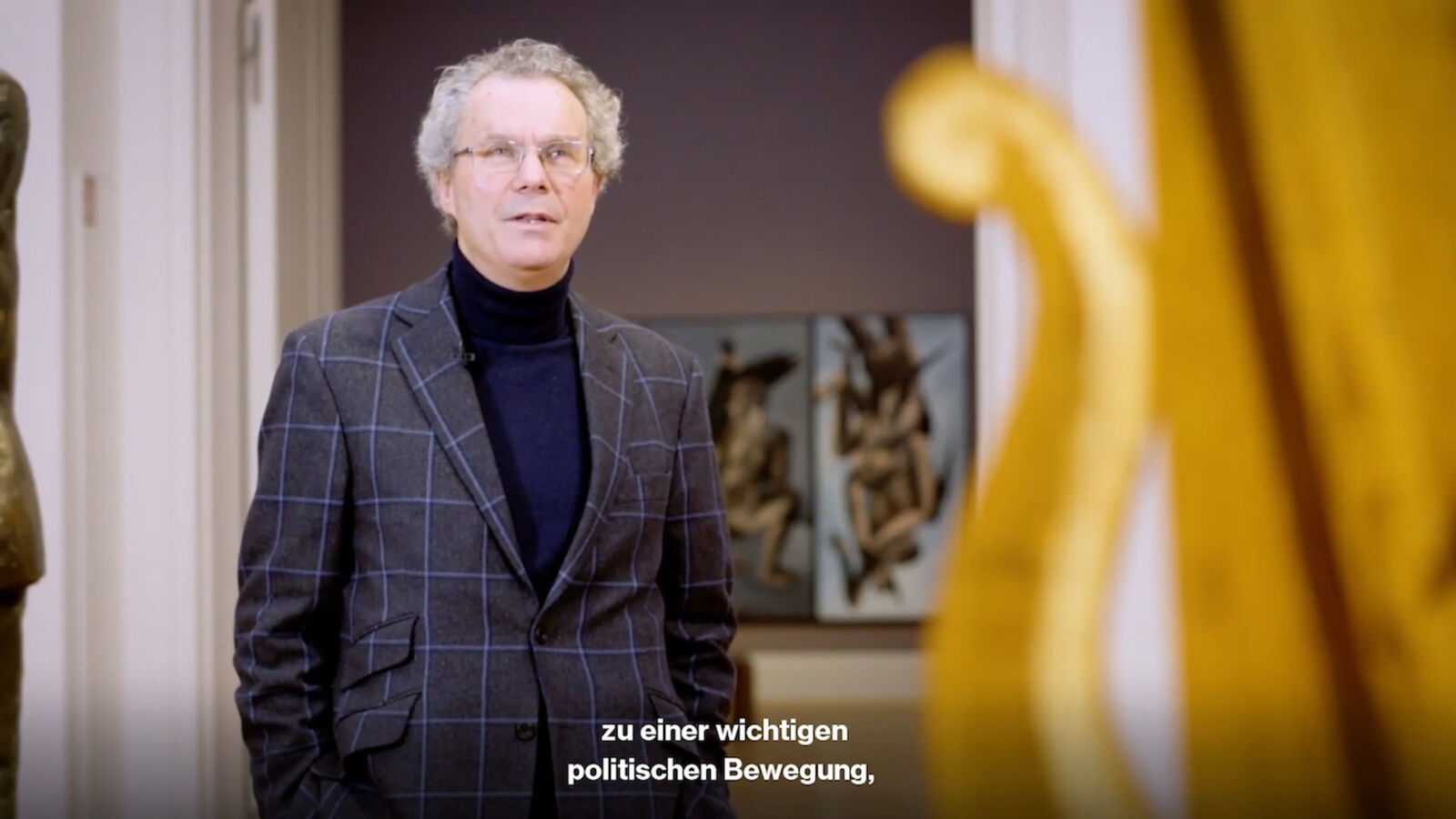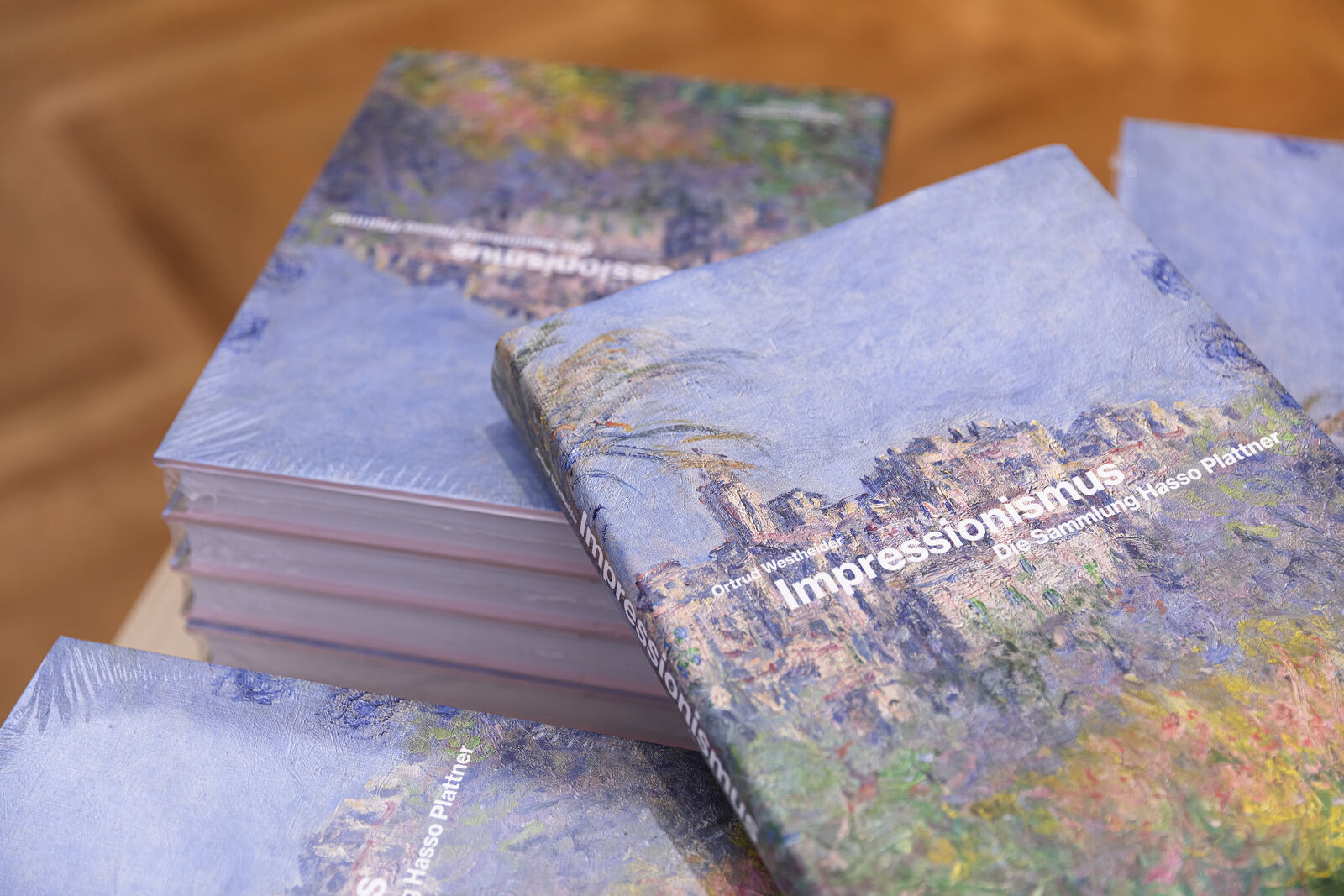
Laura Junger
Maurice de Vlaminck
Born 1876 in Paris
Died 1958 in Rueil-la-Gadelière
Vlaminck was one of the founders of Fauvism. Lacking academic training but sensitive to the influences of his contemporaries, he developed his style primarily in the genre of landscape painting.
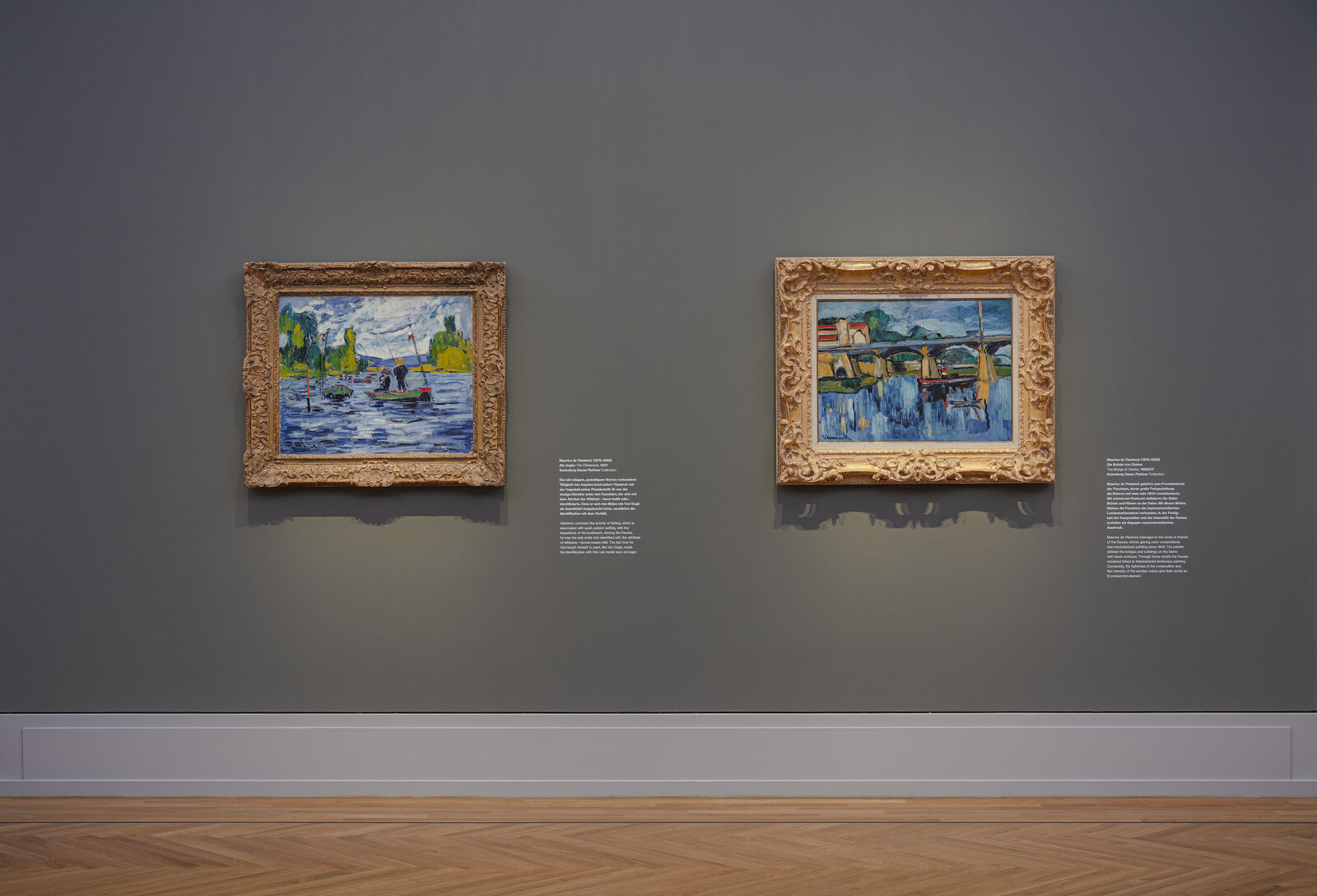
David von Becker
Vlaminck did not pursue a career as an artist until 1900, after he had already worked as a mechanic, professional cyclist, and musician. The catalyst for his decision was an encounter with the painter Derain. In 1901, Vlaminck visited a retrospective of the work of Vincent van Gogh, which made a profound impression on him.
Like his friends Henri Matisse and Derain, he developed a style with brilliant colors and impulsive brushstrokes by 1905. That same year, the artists showed their innovative works at the Salon d’Automne, prompting a critic to describe them as “Fauves” (wild beasts). Already in 1908, his style changed in response to Cubism as well as the art of Cézanne. After World War I, Vlaminck increasingly withdrew from public view.
Vlaminck in the collection
Maurice de Vlaminck is represented with nine works in the Hasso Plattner Collection, on view in the Museum Barberini as a permanent loan from the Hasso Plattner Foundation. With over 110 paintings of French Impressionism and Post-Impressionism, including masterpieces by Claude Monet, Pierre-Auguste Renoir, Berthe Morisot, Gustave Caillebotte, and Paul Signac, the museum in Potsdam is one of the most important centers of Impressionist landscape painting in the world.


